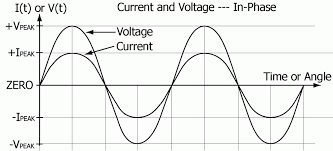Last Updated on February 10, 2025 by Bisma Sehar
Electricity is a lot like magic. The American electricity sector produced more than 3.7 billion kilowatt-hours of electric power in 2021.
Americans use electricity without thinking about it. They flick on a light or plug in an appliance, and everything works.
But there is hard science behind how electricity works. If you want to understand electricity, you have to break down the concepts behind it individually.
What is voltage, and what are volts? How does voltage compare to other concepts like current? What do safe practices around voltage look like?
Answer these questions, and you can become a master of electricity in no time. Here is your quick guide.
Table of Contents
The Basics of Voltage
For electrical goods to work, electricity needs a circuit. This gives electricity a path that it can travel through without stopping.
Voltage is what causes electricity to flow through a circuit. It is the difference in electron charge between two spots on a circuit. Electricity flows from an area of high voltage into an area of low voltage, but a power source can give electricity more electrons so it can keep flowing.
Volts measure the speed of electrons as they move through a circuit. The higher the number of volts, the faster the electrons go, and the bigger the difference between the two points in the circuit.
Read also: Electrical Talk: Can You Repair Damaged Wiring?
Related Concepts
Many people confuse voltage vs. current. Current is the amount of electricity that is flowing through an appliance or circuit. Amps are the unit of measure for current, not volts.
Voltage and current are directly related to each other. If you increase one, you will increase the other, and you will increase the overall power of an appliance or circuit. However, increasing the current by a significant amount can cause an appliance to break because appliances can only handle so much electricity at once.
Voltage vs. amplitude is another point of confusion. Amplitude is the highest amount of current or voltage that a circuit has. You can draw voltage on a graph as a wave, and the amplitude would be the wave’s crest.

Safe Voltage
When you touch a live wire, the electricity will flow into your body because your body has a low voltage. A shock of higher than 40 volts can burn your skin, and a shock of higher than 100 volts can kill you.
You should follow cable management procedures carefully. Never hold an electric cable with your bare hands, and move away from a cable if it falls onto the ground.
A partial discharge occurs when a circuit releases part of its electrical flow. A discharge can hurt you or damage an appliance. You should get a partial discharge (PD) detection device to track discharges when they occur and shut down appliances before they get damaged.
A Quick Overview: More About It
Voltage, also known as electric potential difference, measures the amount of electrical energy that can be carried between two points in an electrical circuit. It is commonly measured in volts (V), and can be thought of as the force that drives electric current through a circuit. Voltage is an essential concept in understanding electricity and electrical circuits.
Understanding Voltage
Voltage measures the difference in electric potential energy between two points in a circuit. It represents the amount of work that is required to move a unit of electric charge from one point to another. The voltage unit, the volt, is named after Italian physicist Alessandro Volta, who invented the first chemical battery in 1800.
Voltage in Circuits
In an electrical circuit, voltage is typically supplied by a power source, such as a battery or a generator. This voltage drives the current flow through the circuit, which can be used to power various devices, such as lights or motors. Various components can also modify voltage in the circuit, such as resistors or capacitors.
So What Is Voltage?
Many people have questions about electricity. What is voltage? It is the difference in electric energy between two points, allowing electricity to flow. How does voltage compare to other concepts? Current is the actual amount of electricity in a circuit, while amplitude is the highest amount of electric flow. Voltage is directly related to both.
How does voltage impact safety? Even a moderate amount of voltage can hurt you. You should avoid live wires and use detection devices to avoid discharges.
Electricity is more complicated than voltage. Read more electricity guides by following our coverage.
Apart from that, if you are interested to know about Electrical Resistance then visit our Technology category.
















